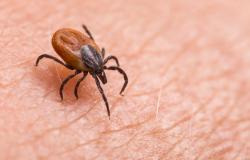With spring, ticks, this mite measuring a few millimeters emerges from its winter lethargy. This awakening also announces that of his appetite. On the menu, a unique dish: blood. Of animals of course, but also of human beings. During these meals, it can transmit pathogens, in particular the bacteria Borrelia burgdorferi, responsible for Lyme disease. If not treated in time, this condition can prove debilitating.
Avoiding tick bites
The first precaution concerns the timing and location of your walks. It’s not a question of forbidding ourselves from these bucolic walks which are the joy of spring. But as much as possible, avoid risky areas, such as undergrowth, tall grass and forest edges. If in winter the risk is very reduced, it increases in spring.
Second precaution, your outfit. Choose long, covering clothing when going out into nature. Opt for pants tucked into socks and long-sleeved shirts.
It’s starting to get hot and you’re reluctant to wear boots. However, don’t bring out your espadrilles and other open shoes. Wear closed, preferably high-top shoes to protect your ankles.
In addition, there are anti-tick repellents on the market. Do not hesitate to apply it to exposed areas of the skin, carefully following the manufacturer’s instructions. Reapply regularly, especially after sweating or swimming.
Back from a walk
All these precautions do not exclude a check once at home. After each outing in nature, carefully inspect your body and clothing, paying particular attention to wrinkled areas such as the groin, armpits and neck. No area should be spared.
If you think you’ve been stung, don’t panic. But it is imperative to remove it quickly and correctly. First tip, never use alcohol, gasoline or flammable products to remove it. Take a tick remover (you will find one in all pharmacies for around twenty euros).
If you don’t have one, get some fine-tipped tweezers. Grasp the head of the tick as close to the skin as possible and pull slowly. Do not rotate or crush the tick. Carefully but firmly remove the tick’s mouthparts embedded in the skin.
Watch your skin
After carefully removing the tick, daily monitoring begins. Monitor the sting area for several weeks. The objective is to detect the possible development of erythema migrans. This medical term designates an erythematous spot, at the site of the tick bite, painless and of annular and centrifugal growth.
If this red skin lesion gradually widens, it is a sign of contamination. Even before the first symptoms such as fever or headache appear, it is essential to consult a doctor.
Treated in time, a tick bite has no consequences. But vigilance remains essential. Let us recall the figures from Public Health France: each year 50,000 cases are diagnosed in general medicine in France. And around 800 hospitalizations per year are recorded.






